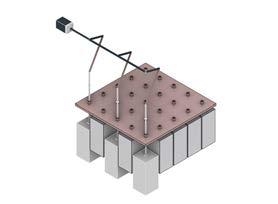
1 minute read
Simulation of adaptive user behavior with respect to noise in offices
from BT Bundle 2020
by RuMoer
According to the statistics website (statista.com), the number of co-working spaces globally has seen a tremendous rise, and this trend expects to follow, as shown in Figure. Coworking, relatively new term, is a kind of activity-based working. This trend suggests that users are now moving towards activity-based working (ABW) and adopting new ways of working (NWW). The development of digital and ICT technologies enables users to carry out work without any restriction of fixed workspace. Thus, it poses a challenge for architects, designers, and other stakeholders to create a holistic environment that can foster greater connection and efficiency.
The problem posed is the absence of the simulation method to evaluate or generate design proposals from the users’ perspective concerning auditory disturbances. Thus, the research objective was to develop and test computational simulation workflow that can be used to simulate users’ Simulation Workflow Evaluation diagrams movement in space with respect to acoustics, allowing evaluation and improvement of design proposals of office spaces at an early design stage.
Advertisement
The simulation workflow was proposed based on the results of literature results. A hybrid agent based model was proposed where discrete event method simulated planning level decision and discrete time method simulation movement patterns of the agents. The simulation workflow uses precomputed data to be used in the core simulation in SyDEVS framework. The movement paths and sound pressure levels for different speech interactions are computed using Pachyderm and SpaceAnalysis package respectively. The simulation model was aimed to provide insights into the spatial planning of the office in the early design phase. The model was tested on a case study of open plan office. The results evaluted are as


below.

Name Graduation year Tutors












